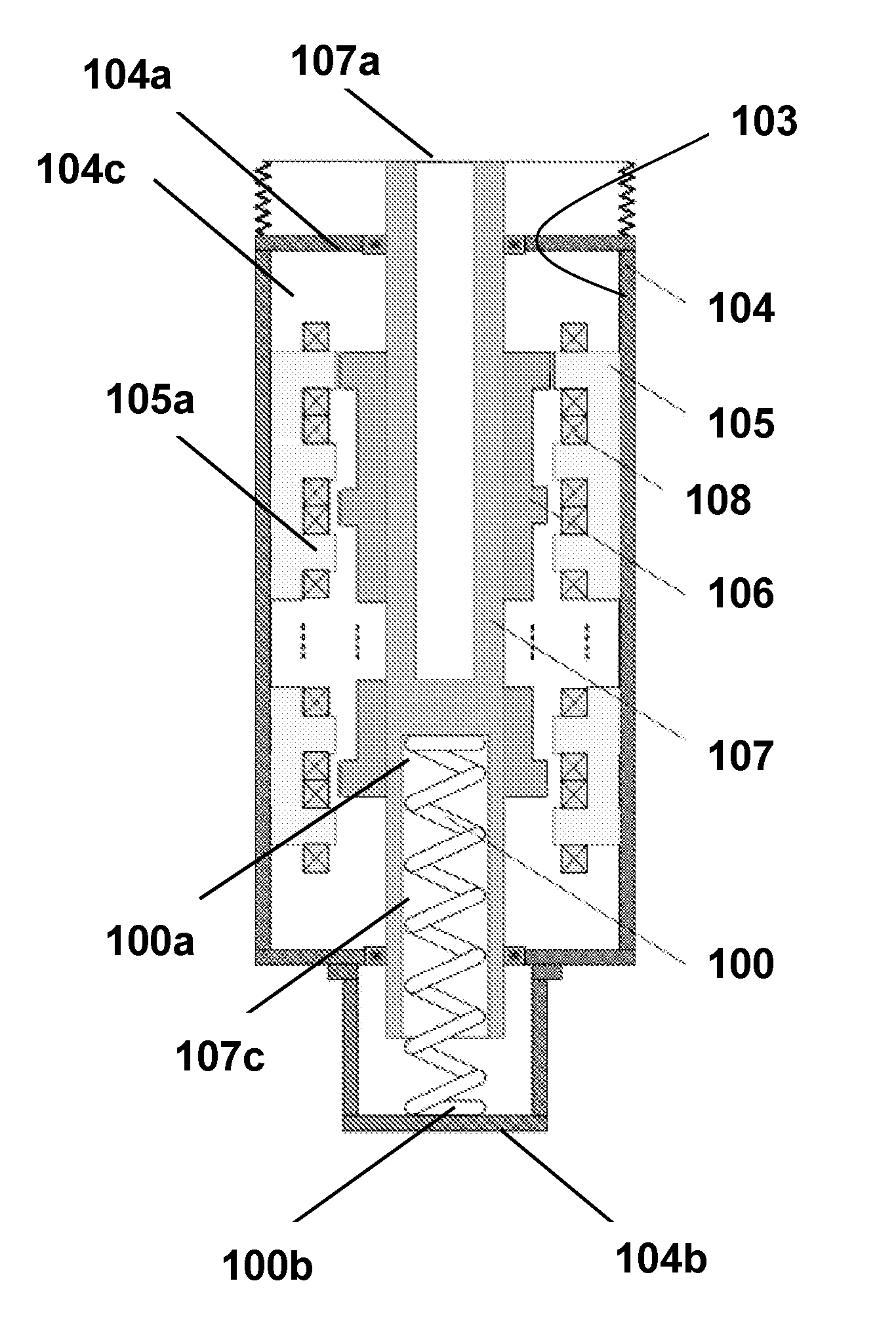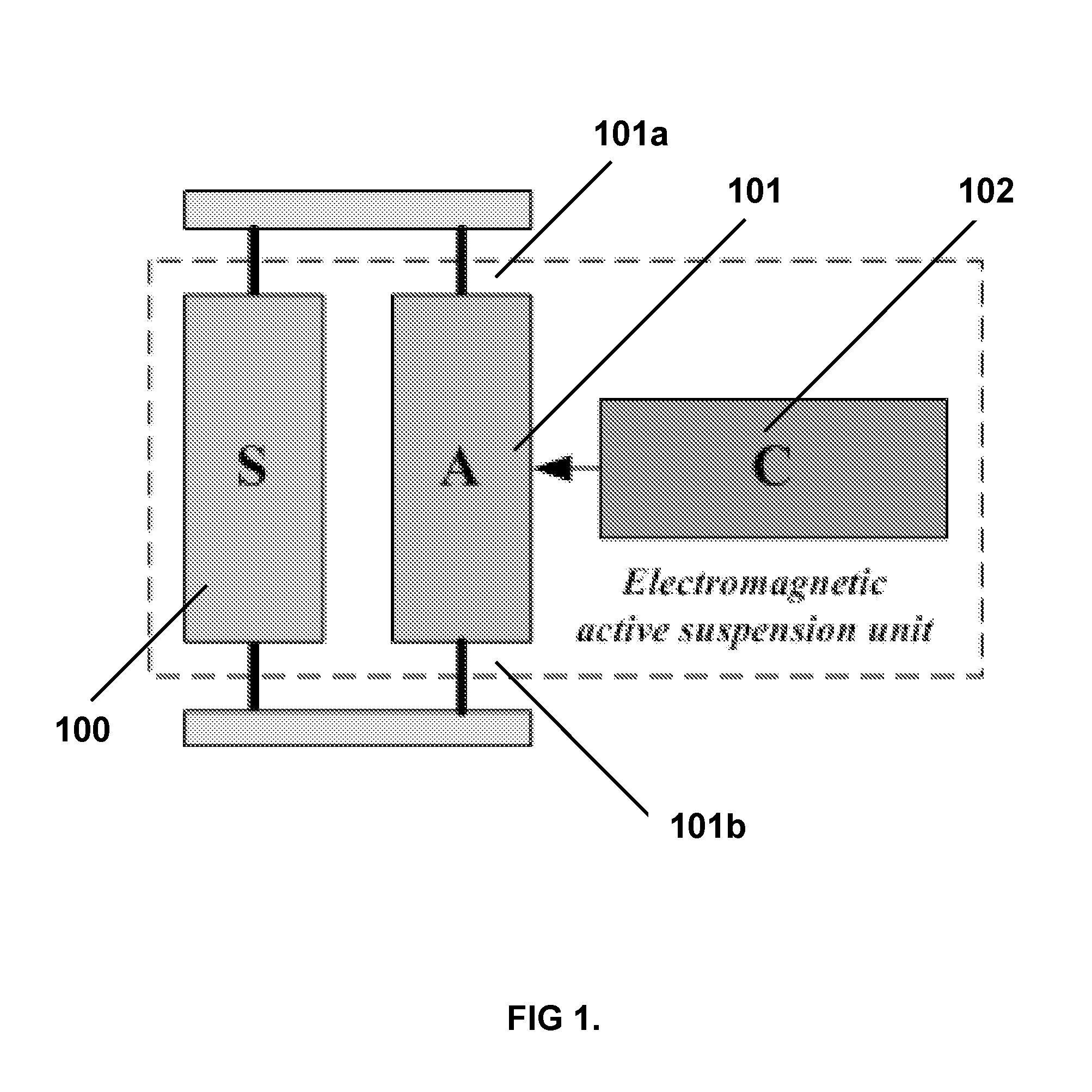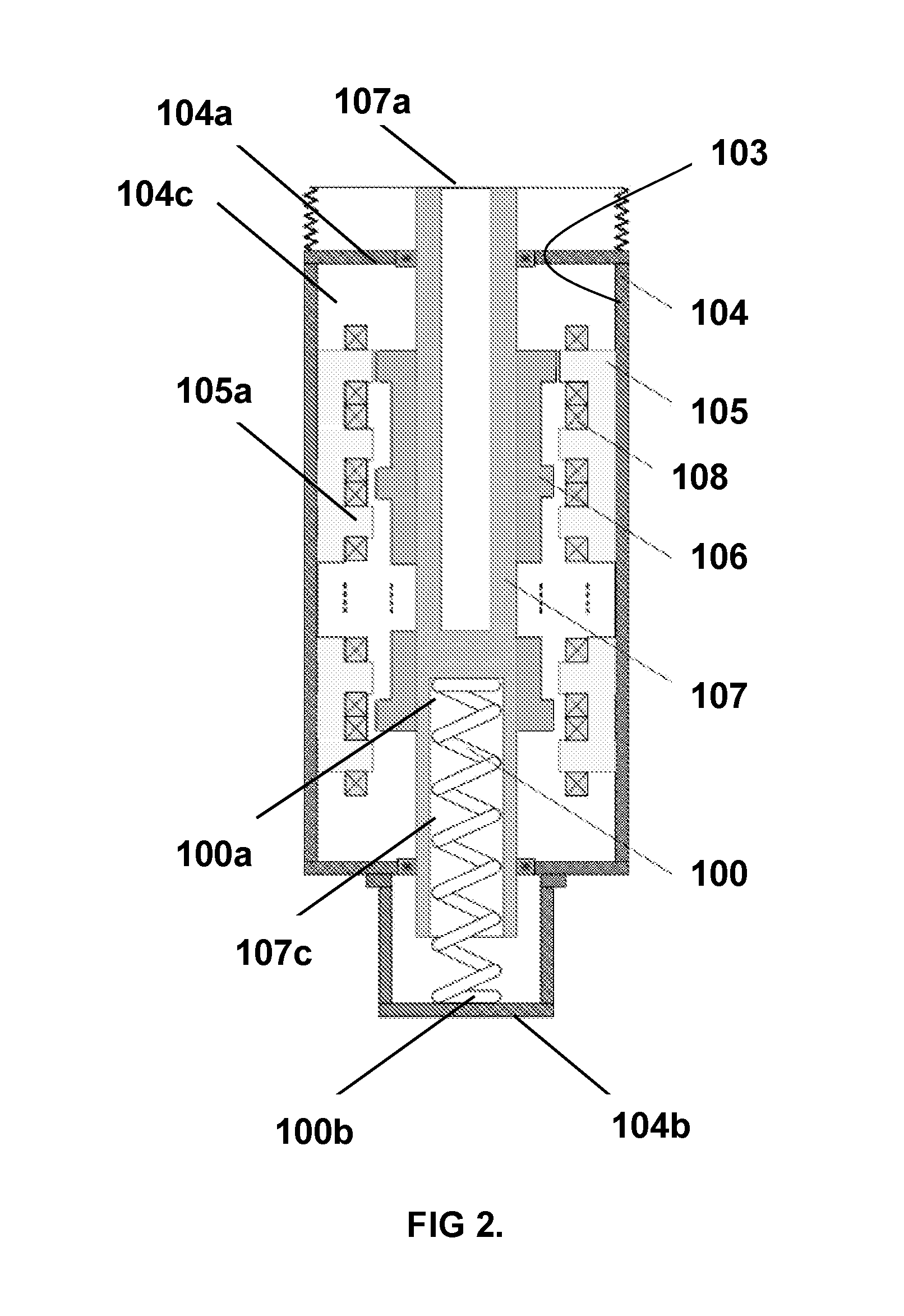Active suspension system and method
a passive suspension and suspension system technology, applied in the direction of resilient suspensions, springs/dampers, vehicle components, etc., can solve the problems of insufficient or excessive movement of the passenger compartment, the inability of passive suspension systems to rapidly produce active forces, and the undesirable pitch and roll motion of the passenger compartment cannot be properly suppressed, so as to improve the dynamic performance, improve the effect of stability and reliability
- Summary
- Abstract
- Description
- Claims
- Application Information
AI Technical Summary
Benefits of technology
Problems solved by technology
Method used
Image
Examples
Embodiment Construction
[0095]Preferred embodiments of the present invention will now be described with reference to FIGS. 1 to 18. The preferred embodiments include an electromagnetic active suspension unit which is suitable for use in providing active suspension in a vehicle. It would be readily understood by a person skilled in the art that alternative embodiments of the present invention may be suitably configured for use in other applications.
[0096]The electromagnetic active suspension unit includes a passive suspension element (100) adapted for operation in combination with an active suspension element (101). The passive suspension element (100) is configured for applying a passive force to a sprung mass of the vehicle and for absorbing vertical motion energy of the vehicle as a wheel of the vehicle traverses irregularities (e.g. sunken and raised sections) in a ground surface. The active suspension element (101) is configured to apply an active force to a sprung mass of the vehicle to alleviate unco...
PUM
 Login to View More
Login to View More Abstract
Description
Claims
Application Information
 Login to View More
Login to View More - R&D
- Intellectual Property
- Life Sciences
- Materials
- Tech Scout
- Unparalleled Data Quality
- Higher Quality Content
- 60% Fewer Hallucinations
Browse by: Latest US Patents, China's latest patents, Technical Efficacy Thesaurus, Application Domain, Technology Topic, Popular Technical Reports.
© 2025 PatSnap. All rights reserved.Legal|Privacy policy|Modern Slavery Act Transparency Statement|Sitemap|About US| Contact US: help@patsnap.com



